RECOIL OFFGRID Gear A Chest Rig for Every Occasion
In This Article
It's important for those in the line of duty, and those in charge of gear acquisition, to remember that the mission drives gear. Before this principle can be followed, the objective itself must be clearly defined and established. For those not in such positions, it can be tempting to spend time and money on gear, hoping that the possession of such equipment will inspire or create opportunities to use it. Whether for situations of civil unrest or scouting for feral hogs: where ammo and other gear might be carried, where mobility and stealth are higher priorities, a chest rig might be the right answer.
We've talked before about some of the history of load-bearing equipment such as a bullet proof vest, and even as gear development goes through phases and cycles centered around the current situation, we are reminded the real world is very different than the “current meta” in a video game. We're often sent looking for the best piece of gear only to be reminded that there are objective and subjective elements in play. A plate carrier is objectively better at stopping a bullet than a chest rig, but in relation to most scouting operations, ends up being a possible mission-crippling burden.
“You will be weighed down with body armor, rations, extra ammumition, communications gear, and a thousand other things. The enemy will carry a rifle, or RPG, a shemagh, and a water bottle, if he is lucky.”
– Kilcullen, David Counterinsergency. Narrated by Peter Ganim. Audible, 2011. Audiobook. (1:17:00)

One of the greatest advantages of a chest rig is its scalability. Even before the placard system was popularized on plate carriers, a chest rig could easily be worn over body armor. A product of modern warfare, where battles are fought more in skirmishes, than grand assaults, in streets, not trenches, the lightweight and easy-to-produce piece of kit has evolved to fit the needs of the operator, the hunter, and the terrorist.
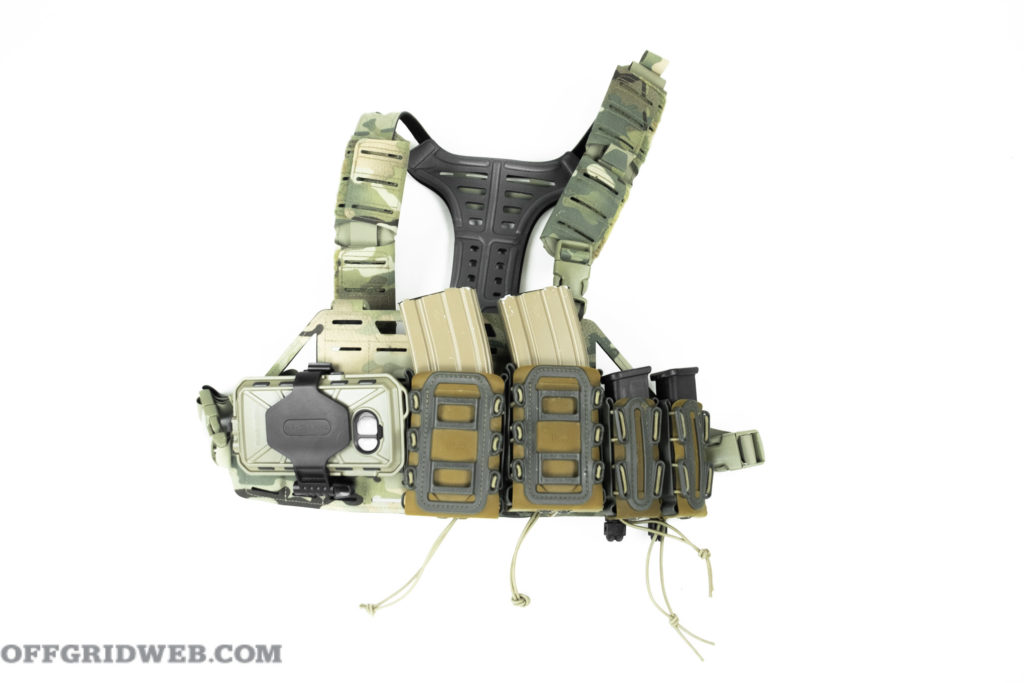
Above: The S&S Precision Chest Rig-Modular represents an example of using modern manufacturing and materials to create a uniquely advanced piece of kit with one of the best fit and most space for attaching mission-essential equipment.
Two historical elements influenced and inspired the development of the chest rig, all such taking place in the latter half of the 20th century. As industrialized militaries adjusted their gear and tactics, the chest rig came about through the proliferation of AK-47 pattern rifles, the integration of contemporary vehicles, and specialized small-unit tactics. While the Rhodesians are often credited with creating the chest rig during their Bush War, it was the Chinese Communists that first fielded them during the Viet Nam conflict. The size and curvature of AK-47 style magazines denied the use of belt-mounted carrying systems.
Another key integration came about when cars, trucks, and tanks appeared on the scene. The U.S. Army's ALICE system worked well to reduce the weight an individual soldier would carry, but what worked in the field didn't always work in the passenger seat. This is where the Rhodesian Bush War comes in, as the Selous Scouts and similar forces popularized the chest rig as it facilitated reloading a rifle in the confines of a vehicle. Since then, the influence can be seen in the way plate carriers developed, adapting to both mounted patrols and dismounted special operations simultaneously. To date, the U.S. Military continues to in field chest rigs, especially in reconnaissance-related activities.
Now it wouldn't be fair to lump all chest rigs together and simply grade them on quality. Three distinct types stand out, each emerging to address different problems. Even as they are divided between light, medium, and heavy chest, each addresses a different scenario altogether.
Recently represented by the Spiritus Systems Bank Robber and the Unobtanium Gear Dank Robber, the lightweight category is built for the covert nature of many modern conflicts. Able to be concealed under a jacket or hoodie, they fit the clandestine nature of counter-insurgency, as well as bank robberies. Minimalist chest rigs are typically designed to meet a specific goal, and so are not as configurable to different scenarios. In exchange, they are simple, and in some cases, disposable.
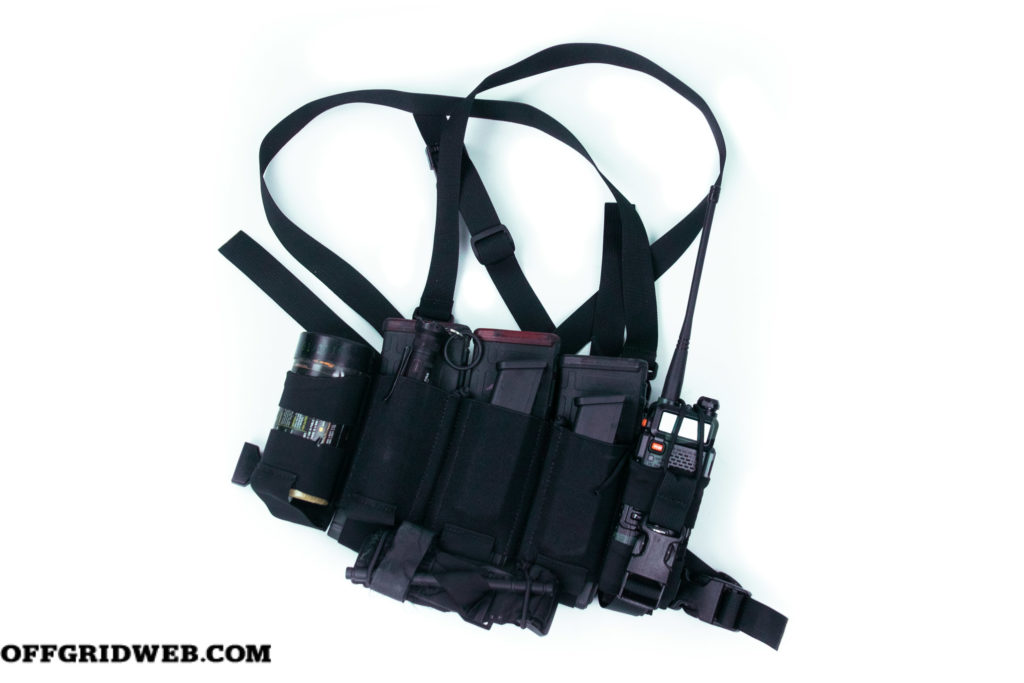
In our review of the Dank Robber chest rig by Unobtanium Gear, we highlighted that the simplicity of the gear was it's strongest point. Although it had the ability to carry up to three rifle and three pistol mags, as well as a small radio and smoke grenade or first aid kit, it worked very well carrying less.
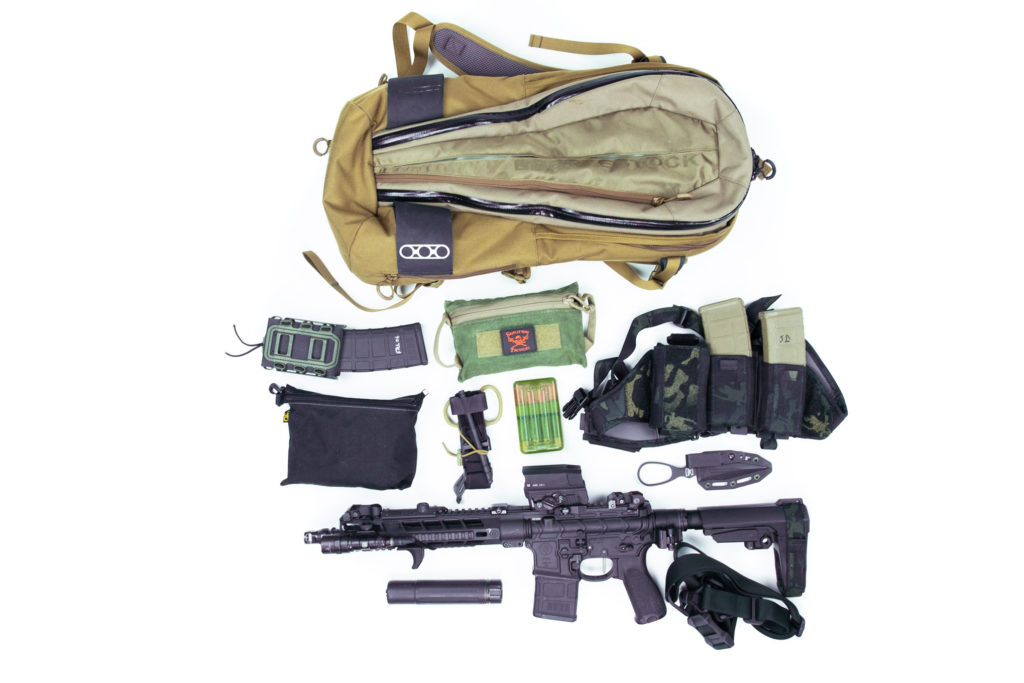
For those not currently engaged in guerilla-warfare, these light chest rigs vary in design, such as the INVRT bandoleer featured in this EDC Bag Dump of the Eberlestock Cherry Bomb. A set-it-and-forget-it piece of equipment, that if carried, should come out to the range with you from time to time, minimalist chest rigs fit well in tight spaces and get-home bags. A well-worn and adapted chest rig of this type is suited for providing neighborhood security during times of civil unrest, as it can easily go unnoticed.
Minimalist Chest Rig Reviews
These approach two very separate, but related scenarios: military ranging, and stalking elusive game. In both situations, there is a time to move quickly over adverse terrain, and another to move with precision, while still carrying an array of mission-specific tools. Where the hunter may drop his pack and set up camp, those ranging deep behind enemy lines will set up a patrol base when approaching a specific target.
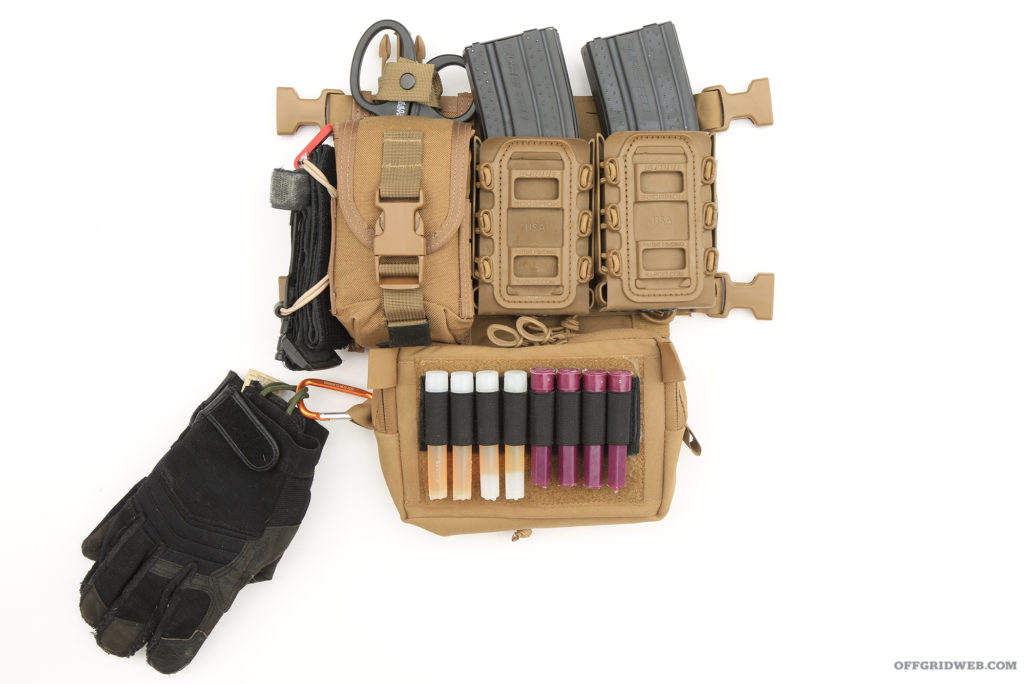
Above: The Redline Gear Emergency Management Rack with attached Demo Pouch represents a mid-size chest rig that could attach to a plate carrier.
The mid-weight chest rig will carry the mission essential gear, from demolitions, to binoculars. It can be thought of as a chest rig meant to carry tools in addition to the baseline of ammunition, medical, and signalling. Some come in one piece, pre-built but adaptable such as the Haley Strategic D3CRM and D3CRX, and others must be built, such as the S&S Precision Chest Rig-Modular.
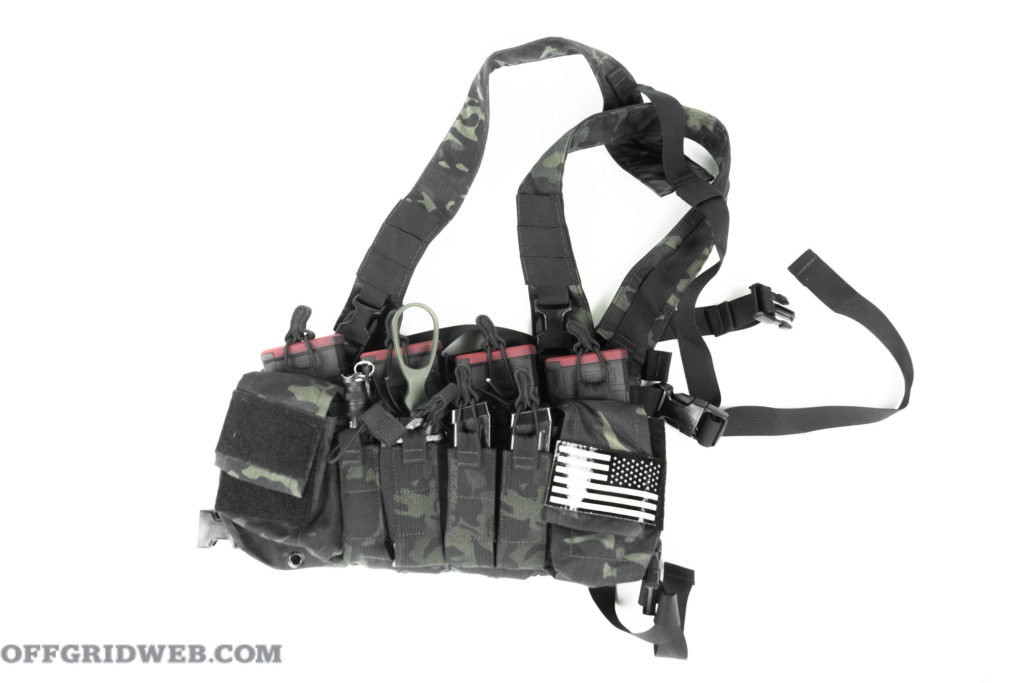
Above: On this Haley Strategic D3CRX: 4 Rifle Mags, 2 Pistol Mags, a Skallywag Dagger, and a Surefire Flashlight. The large flanking pouches are perfect for a smoke canister or medical gear.
Sometimes these rigs are capable of accepting armor plates via a sleeve or other system. The adaptation of many plate carriers have turned many mid-weight chest rigs into placards to simplify and remain consistent across practice. That way, the chest rig that rides around in the trunk can be scaled up to an armored situation when the driver gets home, or when moving from patrol base to patrol base, the team can download their armor in order to prioritize speed and stealth.
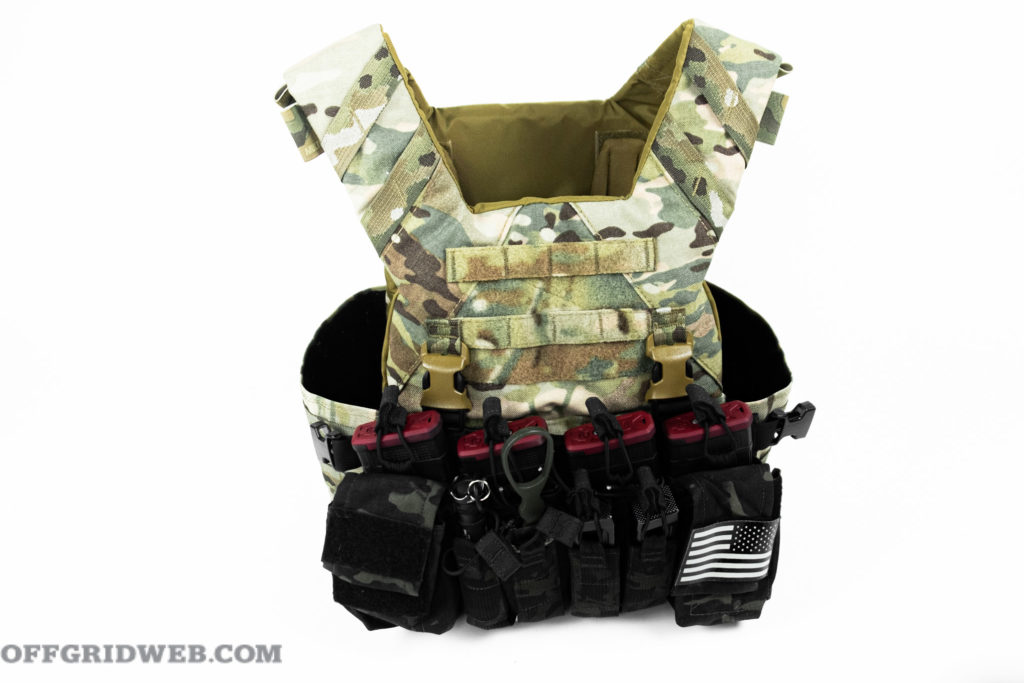
Above: The Haley Strategic D3CRX can be quickly attached to a plate carrier equipped with the right clips, such as this Esstac Daeodon Plate Carrier.
When hunting, these will still ride underneath a pack, allowing for navigation tools, and snacks to be stored in a centralized location on the body. If signs of their quarry were to be suddenly found, they could quickly drop their pack and move on their prey.
The final catagory of chest rig is the most uncommon, in that it's only preferred in either very specific instances, or has been replaced, in many ways, by the Plate Carrier. In contrast, however, it harkens back to a time not too long ago, when larger, long-term operations would take forces far from supply lines. As a result, however, these are more often found in recreational scenarios now.
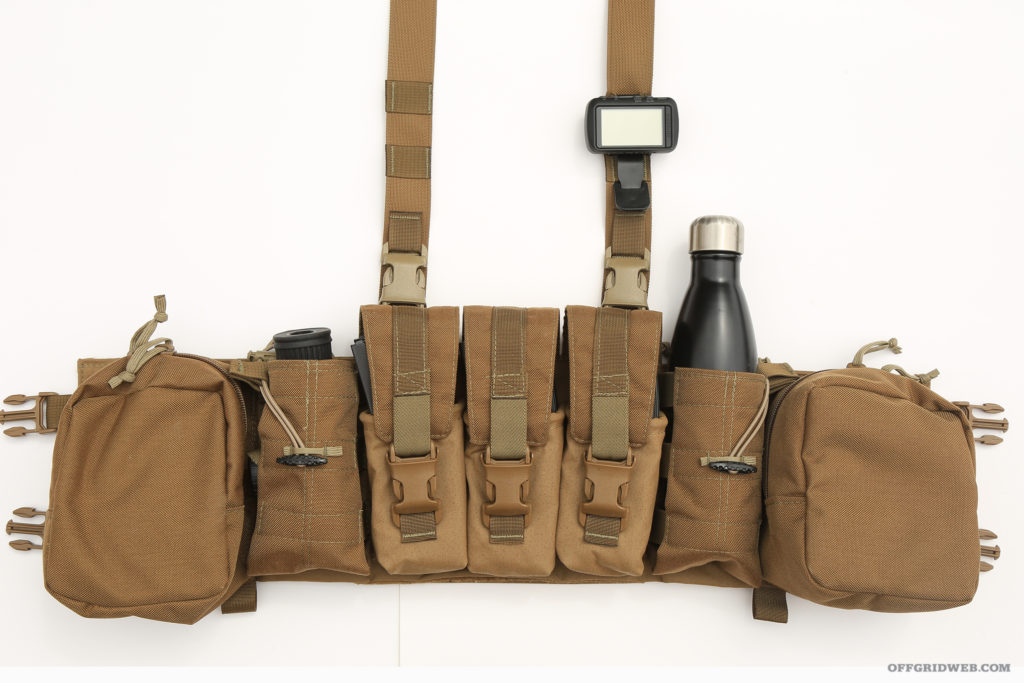
Above: The Barrel and Hatchet Ghost Chest Rig fulfills the role of a long-term operation sustainment gear, capable of carrying water, food, and necessary equipment for both surviving and seeing the mission completed.
The end-all-bring-all of Chest Rigs, water, food, and other sustainment resources can be carried on these larger, more expansive load-bearing rigs. Most likely to be modular, these can be thrown over a plate carrier if need be, but it distinguishes itself from the mid-weight category via application. Where a mid-weight might be used for a 3-10 day operation, an expedition class rig is for those expecting multiple consecutive weeks away from a base, who can be resupplied in the field.
It can be easy to fall into the trap of seeing a chest rig as merely a load-bearing system that doesn't accept armor plates, but that would be viewing it as something it's not trying to be. Even though it's a champaign problem for many, gear selection, and the integration of a chest rig into an ecosystem of surveillance or defense depends on what that piece of gear is trying to accomplish. As stated earlier, it can be easy to put the cart far before the horse when buying a chest rig. A slick, low-profile rig does a spy make.
Civilian applications are fundamentally rooted in individual responsibility. Whether pursuing game over adventuresome terrain or establishing the perimeter in a civil unrest scenario, the chest rig is one solution among many, but also one with a decisive history. That being the case, when looking for a mobile and compact package to carry specified equipment, or add a layer of scalability to an EDC Survival Loadout, this is the way.
 STAY SAFE: Download a Free copy of the OFFGRID Outbreak Issue
STAY SAFE: Download a Free copy of the OFFGRID Outbreak Issue
No Comments